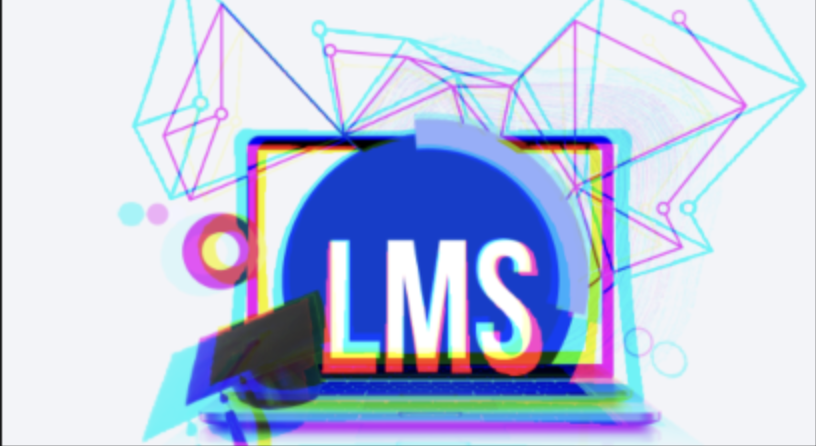The story begins on a beautiful day when I, a tech-savvy educator, decided to explore a concept often mentioned in the realm of education and online training: LMS. LMS stands for Learning Management System. I had heard about it many times but was still unclear about how it works and the benefits it offers.

How Does LMS Work?
After researching, I realized that LMS is a software or online platform that helps manage, document, track, report, and deliver educational or training programs. An LMS typically includes the following key components:
- User Management: Allows creating and managing accounts for learners, teachers, and administrators.
- Course Management: Create, store, and organize courses, materials, and lectures.
- Tracking and Reporting: Track learners’ progress, record results, and provide detailed reports.
- Collaboration and Communication: Provide tools for learners and teachers to communicate and collaborate, such as forums, chat, and email.
Who Uses LMS?
The users of LMS are diverse, including:
- Educational Institutions
Schools and universities use LMS to offer online courses or supplement traditional education.
Universities, extracurricular schools, K-12 schools, and other institutions employ LMS platforms to support both traditional learning and online learning environments. Teachers and professors use LMSs to distribute course materials, post quizzes and assignments, and engage with students in a collaborative learning setting. - Businesses:
Small business owners commonly use LMS solutions for affordable and consistent employee training. Whether it’s a retail shop, a restaurant, or a tech startup, an LMS helps entrepreneurs offer consistent training materials and assess employee performance without spending too much money. For instance, if a company lacks resources to provide computers for training, they can use an LMS for mobile learning instead. Employees can use their smartphones to access training whenever they want and learn at their own speed. - Non-profits and Government Organizations: Use LMS to provide training programs for the community or their staff.
Nonprofit organizations, especially international NGOs, can use an LMS platform to offer training and educational resources to their staff and volunteers worldwide. Program managers can monitor volunteers’ progress on different projects, ensuring they acquire the necessary skills and knowledge to support the organization’s mission.
Government agencies utilize LMS systems to provide training and compliance programs to their employees. It’s crucial to ensure that every member stays informed about current policies and regulations. LMS platforms simplify the administrative tasks of managing a large workforce, enabling easier tracking and reporting on training progress and compliance efforts.
Benefits of LMS
As I delved deeper into LMS, I discovered the immense benefits it offers:
- Cost and Time Savings: No need to organize in-person classes, reducing costs for hiring instructors and venues.
- Convenience and Flexibility: Learners can study anytime and anywhere, as long as they have an internet connection.
- Personalized Learning: Learners can study at their own pace and receive timely feedback from instructors.
- Efficient Management and Tracking: Easily monitor learning progress and the effectiveness of training programs.
Types of LMS
There are various types of LMS, depending on the usage purpose and specific needs:
- Commercial LMS: Paid platforms like Blackboard, Canvas, and Moodle.
- Open Source LMS: Free or open platforms like Moodle (also has a paid version), Open edX.
- Enterprise LMS: Designed for internal training within businesses, such as SAP Litmos, TalentLMS.
- Educational LMS: Specifically for schools and educational organizations, like Google Classroom, Schoology.
Standards Used in LMS
In my research, I also discovered that LMS often adhere to certain standards to ensure compatibility and effectiveness:
- SCORM (Sharable Content Object Reference Model): This standard is recognized by nearly every learning platform and allows content to interact with the system, tracking user progress and managing course structure effectively. There are currently four versions of this standard: SCORM 1.0, 1.1, 1.2, and 2004.
- Tin Can API (xAPI): It is a nextgen version of SCORM that can exchange data with an extensive number of software, like talent management systems or mobile apps, and tracks most learning activities, including experiential learning and simulations.
- LTI (Learning Tools Interoperability): Allows different learning tools and content to work together seamlessly.
Features of LMS
Here’s a breakdown of LMS features categorized into basic and advanced functionalities:
Basic LMS Features:
- User Management: Enables adding, editing, and assigning roles to users, organizing them into groups or organizations.
- Course Management: Delivers learning materials to learners efficiently.
- Progress Tracking: Assesses learner performance in real-time.
Advanced LMS Features:
- Content Creation: Built-in editor for creating structured course content.
- ILT Classroom Support: Extends support for managing schedules and monitoring attendance for classroom-based training initiatives.
- Mobile Learning: Native mobile apps allow learners to access courses, even offline.
- Social Learning: Facilitates social interaction such as publishing articles, discussing posts, and liking and sharing content among users.
- White Labeling and Customization: Enables branding to maintain consistency with the organization’s identity.
- Gamification: Introduces elements like points, awards, ratings, and badges to enhance learner engagement and motivation.
- Certification: Issues certificates of completion for professional certifications, enhancing the credibility of learner achievements.
These features collectively enhance the effectiveness and versatility of an LMS, catering to diverse learning needs and organizational requirements.
Conclusion
After a long journey of discovery, I realized that LMS is an incredibly powerful and useful tool for education and training. Not only does it save costs and time, but LMS also offers flexibility and convenience, while enhancing the efficiency of management and tracking learning progress. With the continuous development of technology, LMS is sure to remain an indispensable part of education and training in the future.